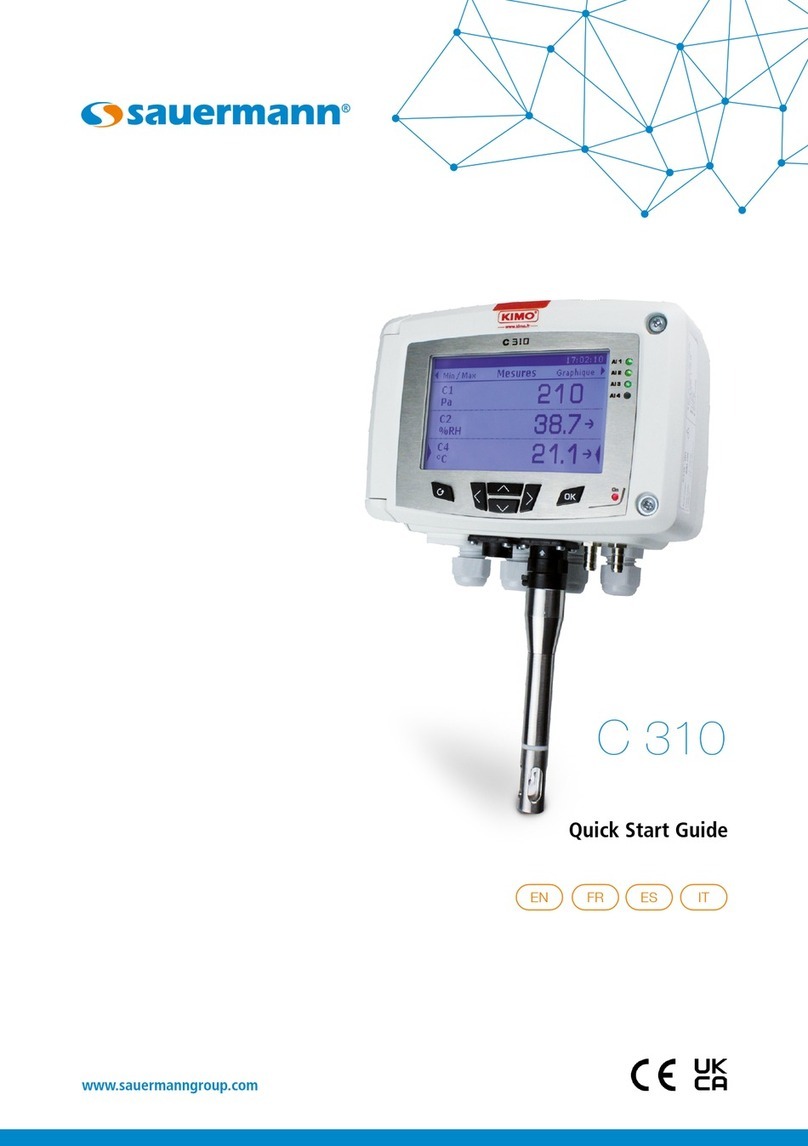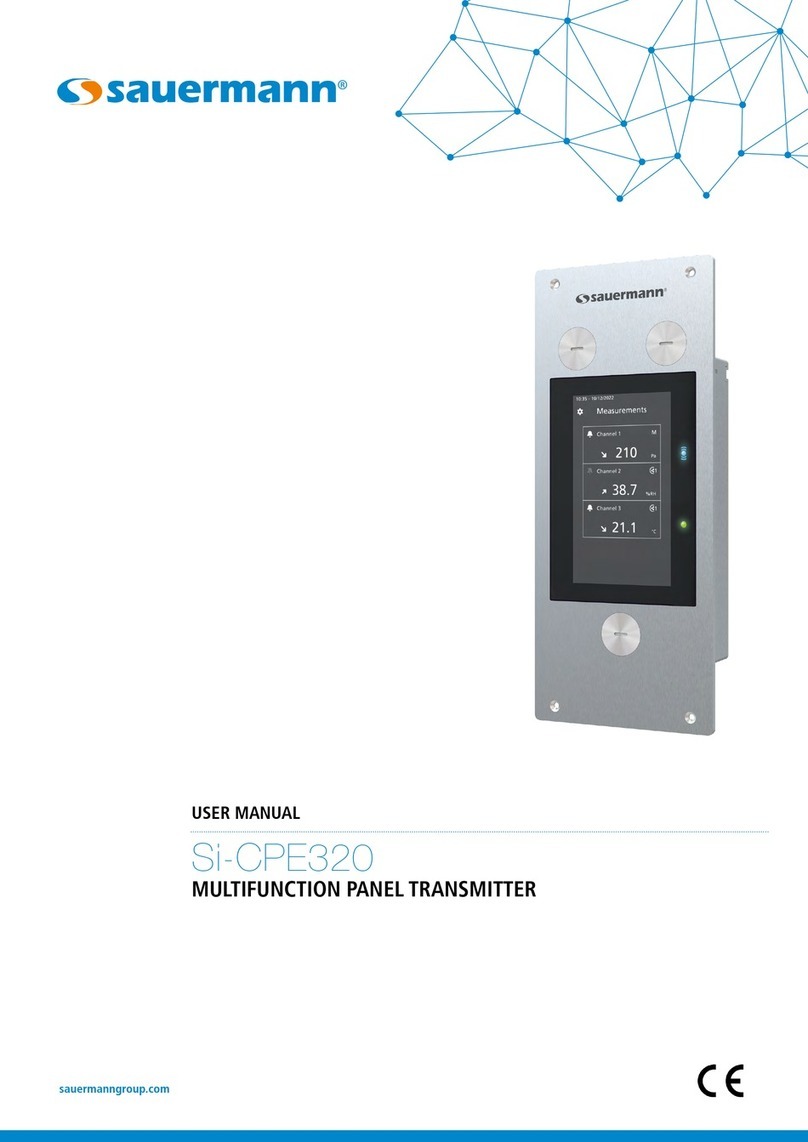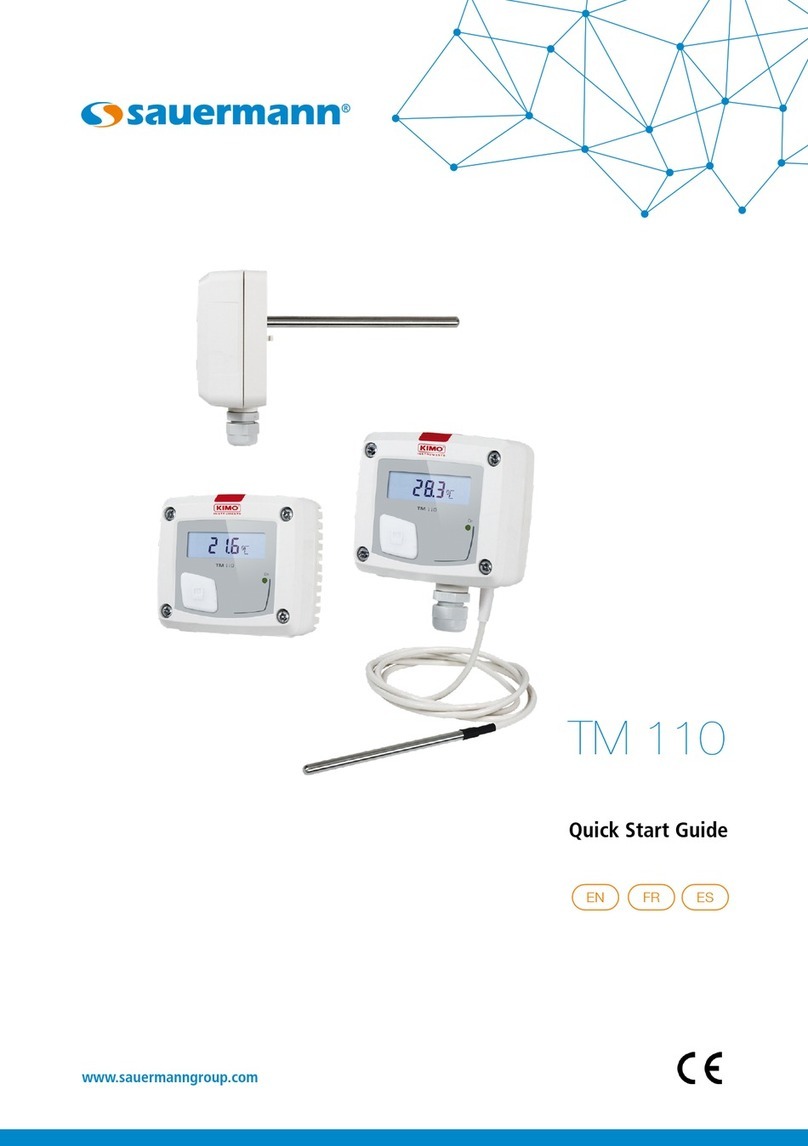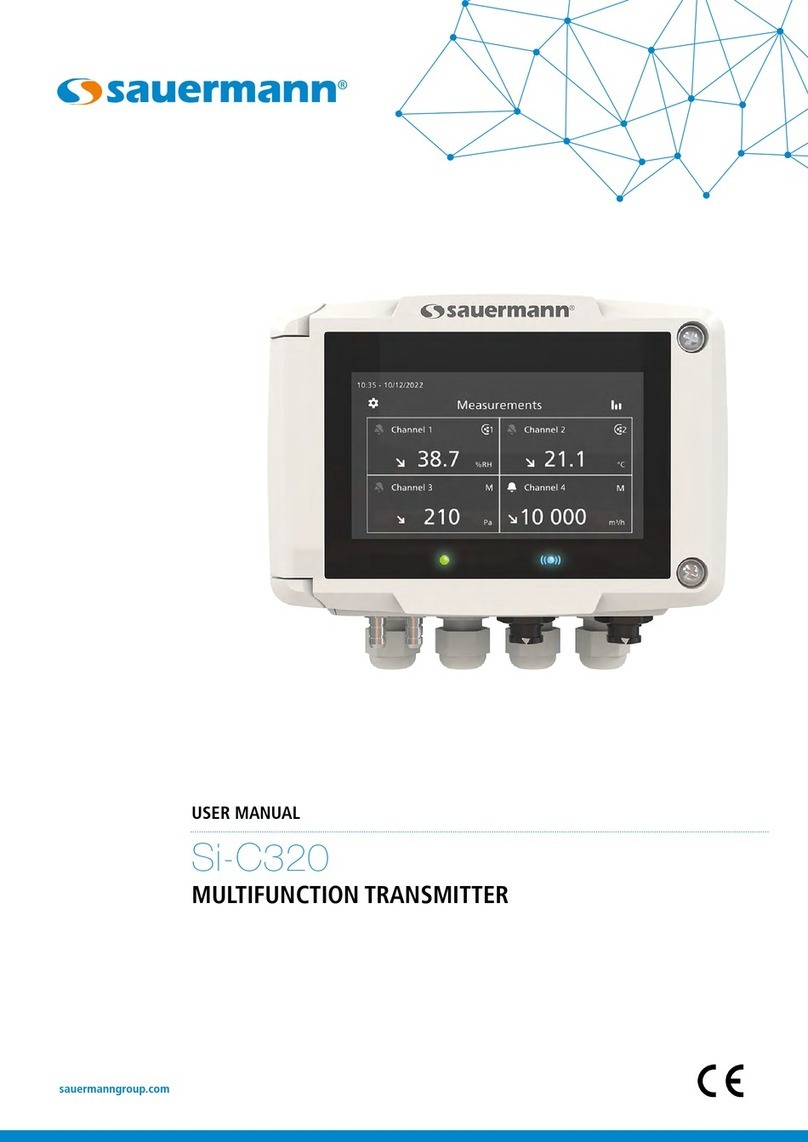
+-
A
or
+
-
3 wires
12 3 4 5 6 7
+- +- +
Power supply 24 Vdc
+-
V
Regulator display or
PLC/BMS passive type
or
VP GND IP VP GND IP
Vdc
IP
12 34 56 7
4 wires
N L
6 7
N L
oror
or
Regulator display or
PLC/BMS passive type Regulator display or
PLC/BMS passive type
+- +- +
+
-
Vdc
IP
+
-
+
+
-
... 5 6 7
A
Power supply
24 Vdc
Power supply 24 Vac
Classe II
+-
4 wires 3 wires
2 wires
Power supply 16-30 Vdc
Display / regulator / PLC
passive type
A
+
-
... 5 6 7
Display / regulator / PLC
active type
A
2 wires 2 wires
16-30 Vdc
Regulator display or
PLC/BMS passive type
+-
V
N L
4 5 6 7
N L
Power supply 24 Vac
Classe II
GND IP
- +
Vdc
IP ou
+
-
Vdc
IP
+
-
+
+
-
... 5 6 7
Alimentation 16-30 Vdc
autonome de type passif
A
+
-
... 5 6 7
autonome de type actif
A16-30 Vdc
-
For CP111/112/113/114/115 – PO models and CP111/112/113/114/115 – PN models
with 4-20 mA output – passive
Settings and use of the transmitter
Measuring range settings – left DIP switch
To set a measuring range, put the 1, 2 and 3 on-off switches as indicated in the table below.
Auto-calibration
CP 111 pressure transmitter has a
temperature compensation of the gain
from 0 to 50°C and an auto-calibration
process that guarantees over the time an
excellent stability and a perfect reliability
of the measurement on low and high
ranges.
Auto-calibration principle: the
microprocessor of the transmitter drives
a solenoid valve that compensates the
possible drifts on the sensitive element
over the time.The compensation is
performed by the permanent adjustment
of the zero. So the measurement of the
differential pressure is then independent
from the environmental conditions of
the transmitter.
Advantage: no drift
Frequency of auto-calibration:
resetable or from 1 to 60 minutes.
Autozero
To perform an autozero, unplug the 2
pressure connections tubes and press the
“Autozero” key.
On the CP 111 transmitter, it is not
necessary to unplug the 2 pressure
connection tubes.
When an autozero has been performed,
“On” green light turns off then turns
on, and on transmitters equipped with a
display, “autoZ” is displayed.
Conguration
To congure the transmitter, unscrew the
4 screws from the housing then open
it. DIP switches allowing the different
settings are then accessible.
To congure the transmitter, it
must not be energized. Then, you
can make the settings required,
with the DIP switches (as shown
on the drawing below). When the
transmitter is congured, you
can power it up.
Example:
• From 0 to 750 mmH2O, measuring range is 750 mmH2O.
• From -500 Pa to +500 Pa, measuring range is 1000 Pa
• Measuring ranges of the CP 111 transmitter on the ±100 Pa range according to the measurement unit
• Measuring ranges of the CP 112 transmitter on the ±1000 Pa range according to the measurement unit
• Measuring ranges of the CP 113 transmitter on the ±10 000 Pa range according to the measurement unit
1
2
3
4
1
2
3
4
Combination 1 Combination 2 Combination 3 Combination 4 Combination 5
Type of transmitter CP111 CP112 CP113 CP111 CP112 CP113 CP111 CP112 CP113 CP112 CP111 CP113 CP111 CP112 CP113
Pa 20 100 1000 30 250 2500 40 500 5000 50 750 7500 100 1000 10000
mmH2O2.0 10.0 100.0 3.0 25.0 250.0 4.0 50.0 500 5.0 75.0 750.0 10.0 100.0 1000.0
mbar 0.20 1.00 10.00 0.30 2.50 50.00 0.40 5.00 50.00 0.50 7.50 75.00 1.00 10.00 100.00
inWG 0.08 0.40 4.00 0.12 1.00 10.00 0.16 2.00 20.00 0.20 3.00 30.00 0.40 4.00 40.00
mmHg 0.20 0.80 8.00 0.22 2.00 20.00 0.30 4.00 40.00 0.40 6.00 60.00 0.80 8.00 80.00
daPa 2.0 10.0 100 3.0 25.0 250.0 4.0 50.0 500.0 5.0 75.0 750.0 10.0 100.0 1000.0
kPa 0.020 0.100 1.00 0.030 0.250 2.50 0.040 0.500 5.00 0.050 0.750 7.50 0.100 1.000 10.00
hPa 0.20 1.00 10.00 0.30 2.50 25.00 0.40 5.00 50.00 0.50 7.50 75.00 1.00 10.00 100.00
1
2
3
4
1
2
3
4
1
2
3
4
1
2
3
4
1
2
3
4
Off On Off On
Left DIP switch Right DIP switch
Measuring
ranges setting
Output setting
Standard range or
central 0 setting
Units setting
On-off switch
CP 111, CP 112, CP 113


































